Plant Galls
Plant Galls are abnormal growths on a plant caused by parasites, for instance other plants, fungi, insects or mites. The gall provides both shelter and food or nutrients for the invading organism.
Galls caused by insects or mites
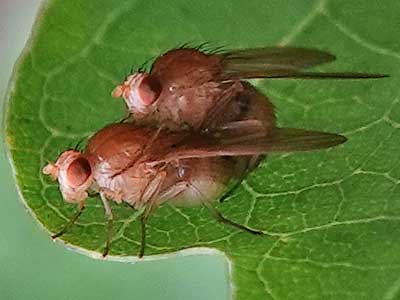
The galls shown below are mostly caused by gall wasps although other animals cause them too (the last two by gall mites). You are unlikely to find the very small gall wasps but some of the galls are very common and easy to spot. Many have complex life-cycles with two distinct alternating generations. Most of the galls shown below contain the larvae of the agamic or female-only generation. These don’t need to mate but will lay eggs that cause a different gall containing the sexual generation, ie males and females. The galls below all grow on oak trees unless stated.
Common Spangle Gall
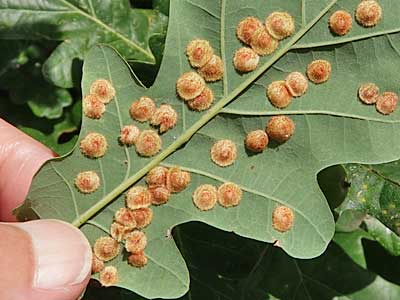
Caused by Neuroterus quercusbaccarum this is the most common gall on oak trees in the valley
Silk Button Spangle Gall
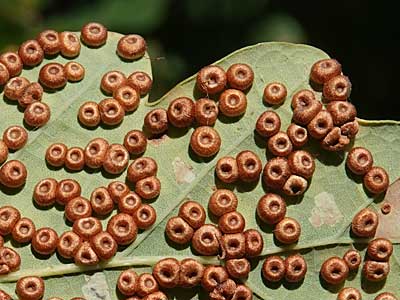
Caused by Neuroterus numismalis this fairly common gall gets its name from its silky button-like appearance.
Smooth Spangle Gall
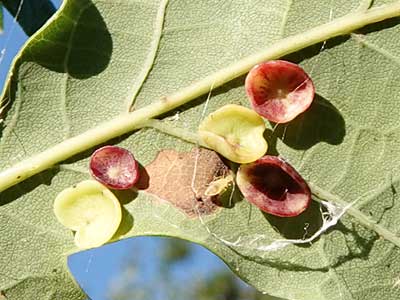
Caused by Neuroterus albipes this relatively unusual hairless gall is usually cream but sometimes with patches of purple or pink.
Knopper Gall
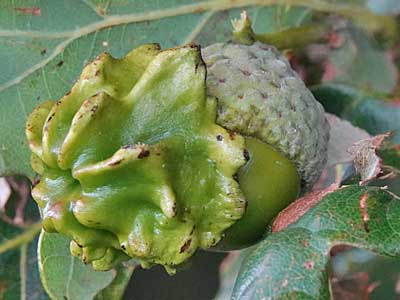
Caused by Andricus quercuscalicis this fairly common gall develops on acorns and is rather sticky when fresh. Colour changes to brown as the gall ages.
Marble Gall
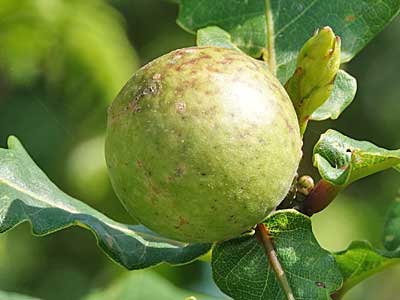
Caused by Andricus kollari this common gall starts off green and ends up brown and woody.
Artichoke Gall
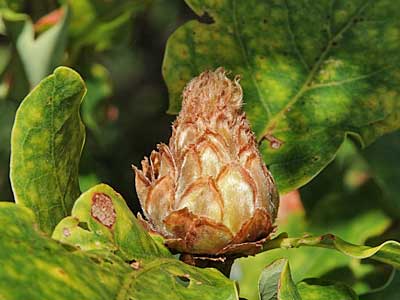
Caused by Andricus fecundator this unusual gall contains an inner gall which falls out in the autumn leaving the outer scales on the tree.
Oak Apple Gall
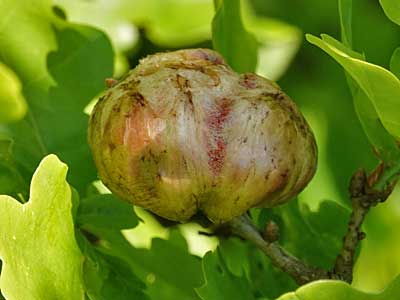
Caused by Bhiorhiza pallida this gall appears in the spring and contains numerous male and female gall wasps.
Cherry Gall
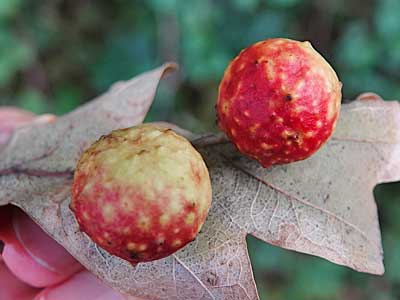
Caused by Cynips quercusfolii this striking gall may have a smooth or warty skin.
Striped Pea Gall
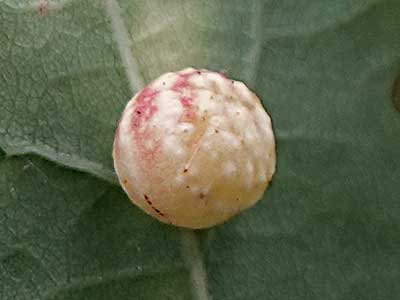
Caused by Cynips longiventris this colourful gall grows on the undersides of oak leaves.
Robin's Pincushion Gall
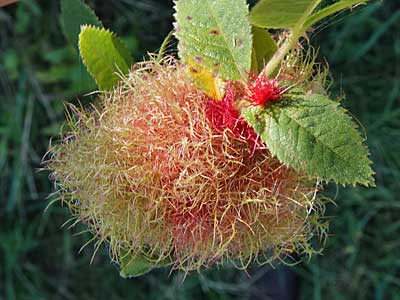
Caused by Diplolepsis rosae and also known as the Bedeguar Gall, this is fairly common on wild roses.
Gall mites on Field Maple
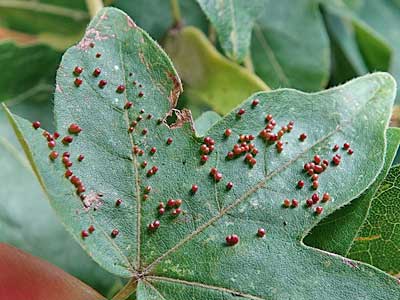
Caused by the gall mite Aceria myriadeum there can be hundreds on a single Field Maple leaf.
Gall mites on Alder
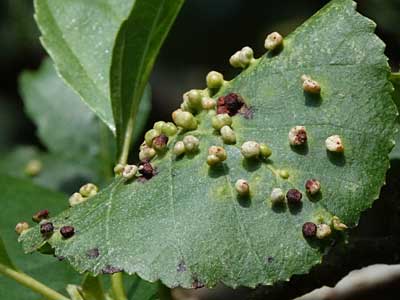
Caused by the gall mite Eriophyes laevis these grow on Alder leaves and turn red as they mature.
Photos on this page by Peter Hunnisett

